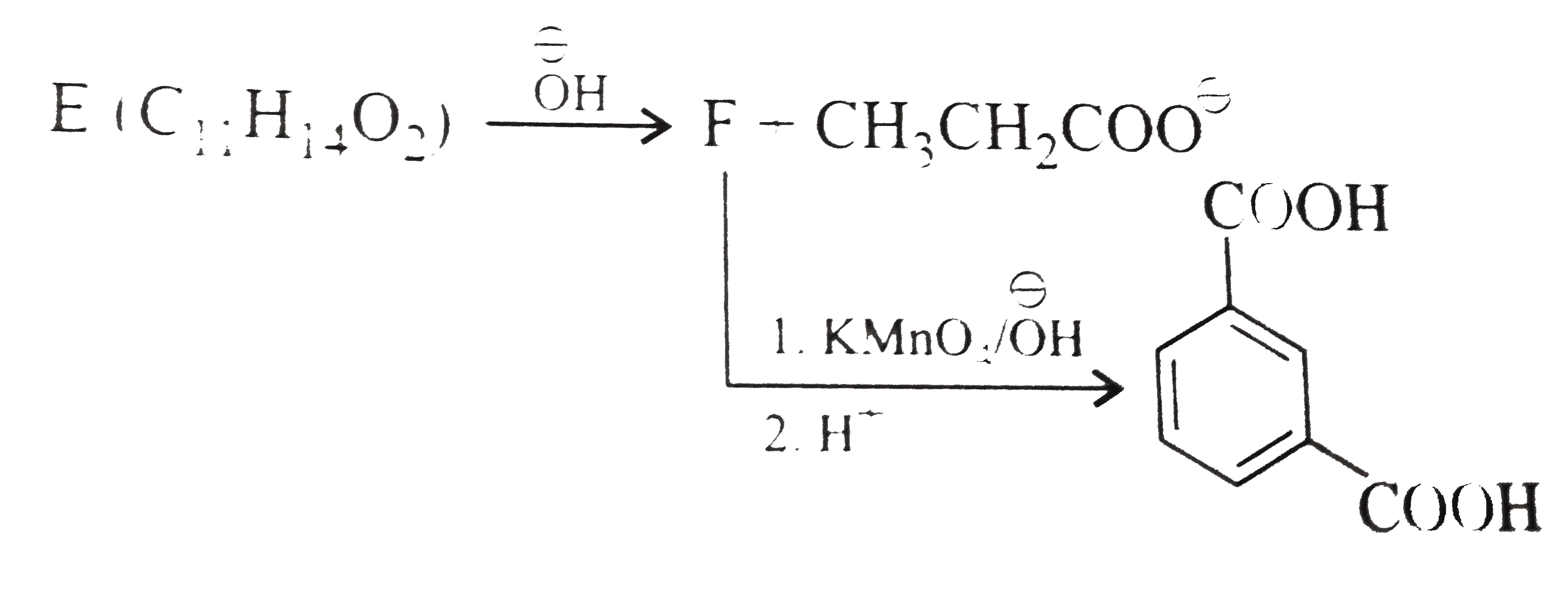Write down the Lewis structures of : (i) CO2(ii)CN−
To draw the Lewis structures for CO2 (carbon dioxide) and CN− (cyanide ion), we will follow these steps:
Step 1: Determine the total number of valence electrons.
- For \( CO_2 \):
- Carbon (C) has 4 valence electrons.
- Each Oxygen (O) has 6 valence electrons, and there are 2 oxygen atoms.
- Total = \( 4 + 2 \times 6 = 16 \) valence electrons.
- For \( CN^- \):
- Carbon (C) has 4 valence electrons.
- Nitrogen (N) has 5 valence electrons.
- The negative charge adds 1 additional electron.
- Total = \( 4 + 5 + 1 = 10 \) valence electrons.
Step 2: Identify the central atom.
- In \( CO_2 \), carbon is the central atom because it is less electronegative than oxygen.
- In \( CN^- \), carbon is also the central atom because it is less electronegative than nitrogen.
Step 3: Draw the skeleton structure.
- For \( CO_2 \):
- Place carbon in the center and connect it to the two oxygen atoms:
O|C|O
- For \( CN^- \):
- Place carbon in the center and connect it to nitrogen:
N∣C
Step 4: Distribute the remaining valence electrons to satisfy the octet rule.
- For \( CO_2 \):
- Start by forming single bonds (2 electrons) between C and each O. This uses 4 electrons, leaving 12.
- Form double bonds between C and each O to satisfy the octet rule:
O=C=O
- Each atom now has 8 electrons around it: Carbon has 4 from the double bonds, and each Oxygen has 4 from the double bonds.
- For \( CN^- \):
- Form a triple bond between C and N:
N≡C
- The triple bond uses 6 electrons, leaving 4 electrons to be placed as a lone pair on carbon (due to the negative charge):
:N≡C:
- Carbon now has 5 electrons (3 from the triple bond and 2 from the lone pair), and nitrogen has 8 electrons (6 from the triple bond and 2 from the lone pair).
Step 5: Check the octet rule.
- For \( CO_2 \):
- Carbon has 8 electrons, and each Oxygen has 8 electrons. The octet rule is satisfied.
- For \( CN^- \):
- Carbon has 8 electrons (3 from the triple bond and 2 from the lone pair), and nitrogen has 8 electrons. The octet rule is satisfied.
Final Lewis Structures:
- \( CO_2 \):
O=C=O
- \( CN^- \):
:N≡C:
- For \( CO_2 \):
- Carbon (C) has 4 valence electrons.
- Each Oxygen (O) has 6 valence electrons, and there are 2 oxygen atoms.
- Total = \( 4 + 2 \times 6 = 16 \) valence electrons.
- Carbon (C) has 4 valence electrons.
- Nitrogen (N) has 5 valence electrons.
- The negative charge adds 1 additional electron.
- Total = \( 4 + 5 + 1 = 10 \) valence electrons.
- In \( CO_2 \), carbon is the central atom because it is less electronegative than oxygen.
- In \( CN^- \), carbon is also the central atom because it is less electronegative than nitrogen.
- For \( CO_2 \):
- Place carbon in the center and connect it to the two oxygen atoms:
O|C|O
- Place carbon in the center and connect it to nitrogen:
N∣C
- For \( CO_2 \):
- Start by forming single bonds (2 electrons) between C and each O. This uses 4 electrons, leaving 12.
- Form double bonds between C and each O to satisfy the octet rule:
O=C=O
- Each atom now has 8 electrons around it: Carbon has 4 from the double bonds, and each Oxygen has 4 from the double bonds.
- Form a triple bond between C and N:
N≡C
- The triple bond uses 6 electrons, leaving 4 electrons to be placed as a lone pair on carbon (due to the negative charge):
:N≡C:
- Carbon now has 5 electrons (3 from the triple bond and 2 from the lone pair), and nitrogen has 8 electrons (6 from the triple bond and 2 from the lone pair).
- For \( CO_2 \):
- Carbon has 8 electrons, and each Oxygen has 8 electrons. The octet rule is satisfied.
- Carbon has 8 electrons (3 from the triple bond and 2 from the lone pair), and nitrogen has 8 electrons. The octet rule is satisfied.
- \( CO_2 \):
O=C=O
- \( CN^- \):
:N≡C:
Topper's Solved these Questions
- BOOK - PRADEEPCHAPTER - CHEMICAL BONDING AND MOLECULAR STRUCTUREEXERCISE - ADDITIONAL QUESTIONS (SHORT ANSWER QUESTIONS)62videos
CHEMICAL BONDING AND MOLECULAR STRUCTURE
- BOOK - PRADEEPCHAPTER - CHEMICAL BONDING AND MOLECULAR STRUCTUREEXERCISE - ADDITIONAL QUESTIONS (LONG ANSWER QUESTIONS)13videos
CHEMICAL BONDING AND MOLECULAR STRUCTURE
- BOOK - PRADEEPCHAPTER - CHEMICAL BONDING AND MOLECULAR STRUCTUREEXERCISE - NCERT EXAMPLAR PROBLEMS ( MULTIPLE CHOICE QUESTIONS BASED ON THE GIVEN COMPREHENSION )4videos
CHEMICAL BONDING AND MOLECULAR STRUCTURE
- BOOK - PRADEEPCHAPTER - APPENDIXEXERCISE - MODEL TEST PAPER <br> (Section C )9videos
APPENDIX
- BOOK - PRADEEPCHAPTER - CLASSIFICATION OF ELEMENTS AND PERIODICITY IN PROPERTIES EXERCISE - Competition Focus (Jee Main and Advanced / Medical Entrance ) ( Assertion - Reason Type Question ) (Type II)12videos
CLASSIFICATION OF ELEMENTS AND PERIODICITY IN PROPERTIES
Similar Questions
Write the Lewis structure for CNΘ ion .
View SolutionWrite the Lewis dot structure of CO2−3 ion .
View SolutionWrite the Lewis structures for
(i) CO
(ii) NH2CONH2 (urea)
(iii) H2CCH2 (ethene)
(iv) HNO3View SolutionWrite the Lewis dot structure of the nitrite ion (NOΘ2) .
View SolutionWrite down the structures of the (E) and (F).
 .View Solution
.View SolutionDraw the Lewis structure of BeCl2.
View SolutionWrite Lewis dot structure of HCOOH.
View SolutionWrite the Lewis dot structure of CO2−3 ion .
View SolutionWrite the resonance structure of CO2 .
View SolutionWrite the Lewis dot structure of CO molecule .
View Solution

